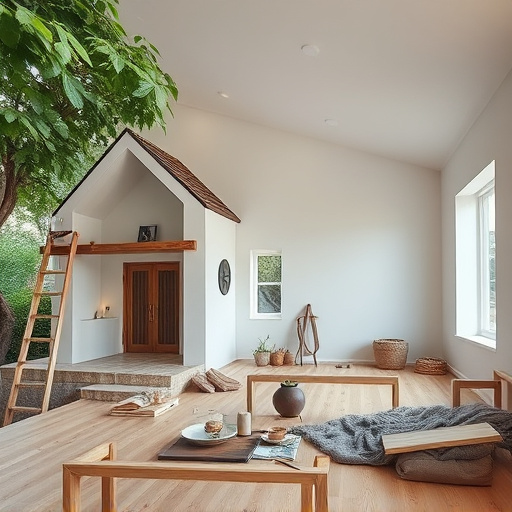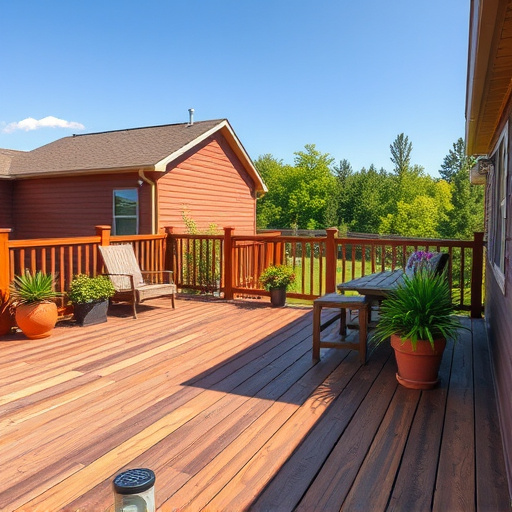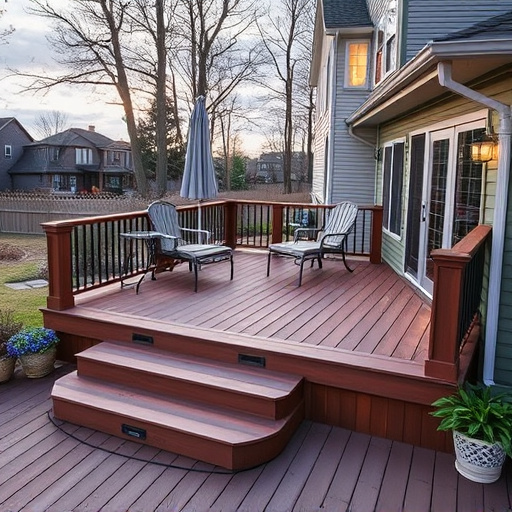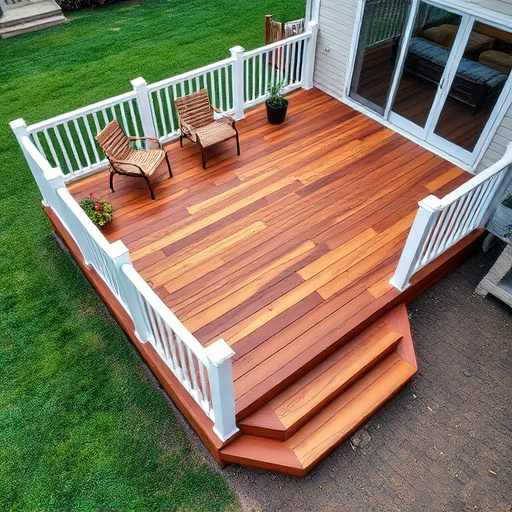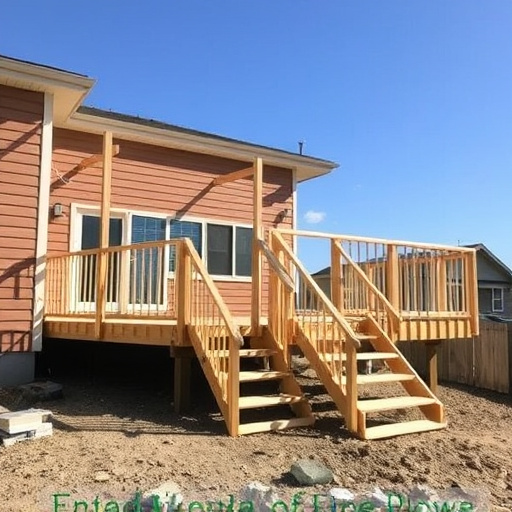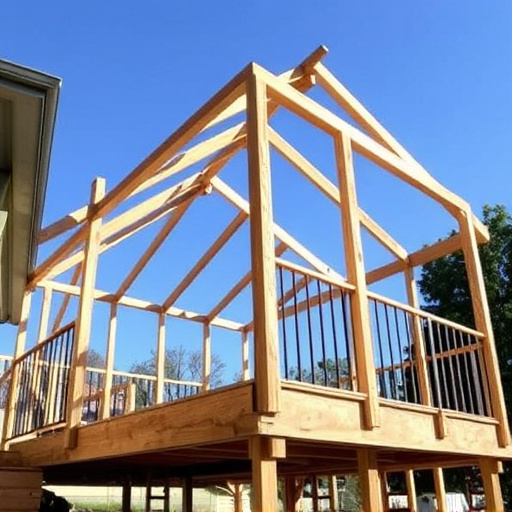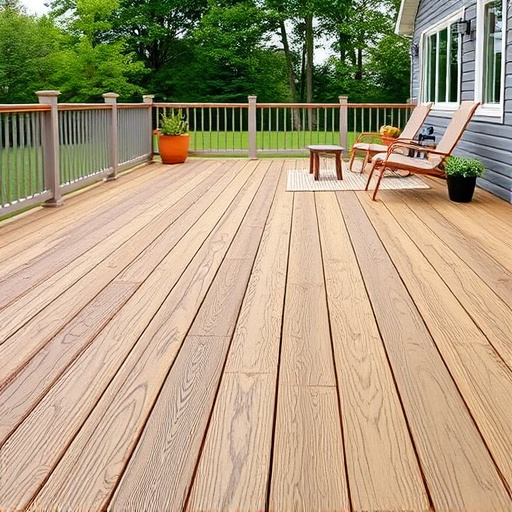Crafting a deck design for large outdoor spaces requires balancing size, proportion, and integration with nature. Accurate measurement guides scaling, seating arrangements, and roofing choices. Integration with the home's scale and yard style, material selections based on durability and safety, and consideration of local aesthetics and environmental factors create a harmonious deck design. Experts and roofing services ensure structural integrity and protection against storm damage.
Scaling deck design for large outdoor spaces requires a thoughtful approach to both aesthetics and functionality. This comprehensive guide explores how to create stunning, proportional decks that seamlessly integrate with expansive surroundings. From understanding space dynamics and choosing durable materials to enhancing visual appeal and optimizing layout flow, we’ll navigate the process step-by-step. Discover expert techniques for constructing robust, visually captivating, and comfortable decks tailored to your vast outdoor canvas.
- Understanding Space and Proportion for Large Outdoor Decks
- – Assessing the physical dimensions of the outdoor space
- – Proportionally scaling deck design elements to the surrounding environment
Understanding Space and Proportion for Large Outdoor Decks
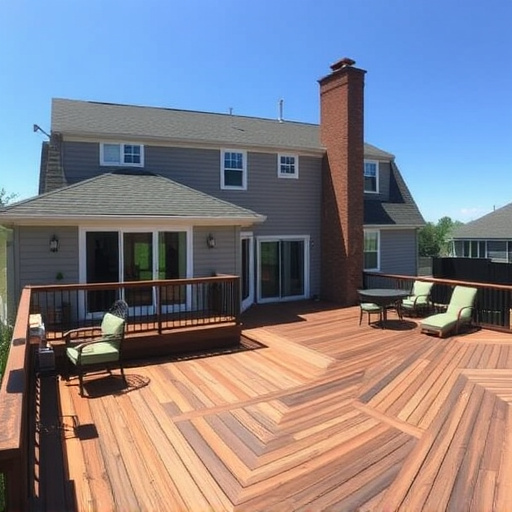
When designing a deck for large outdoor spaces, understanding space and proportion is paramount. The key lies in balancing the size of the deck with the surrounding area to create a harmonious aesthetic. In vast landscapes, a deck should not appear minuscule but neither should it overpower the environment. This delicate balance ensures that the deck design complements the natural setting without becoming a jarring element.
Consider the scale of elements within the deck itself. For instance, if you’re incorporating a seating area, choose furniture and accessories that reflect the expansive nature of the space. Larger pieces can anchor the deck, while smaller, more delicate elements can add visual interest without dominating the overall design. This strategic approach ensures that your outdoor deck becomes an integral part of the beautiful, expansive landscape, enhancing its appeal with both form and function.
– Assessing the physical dimensions of the outdoor space
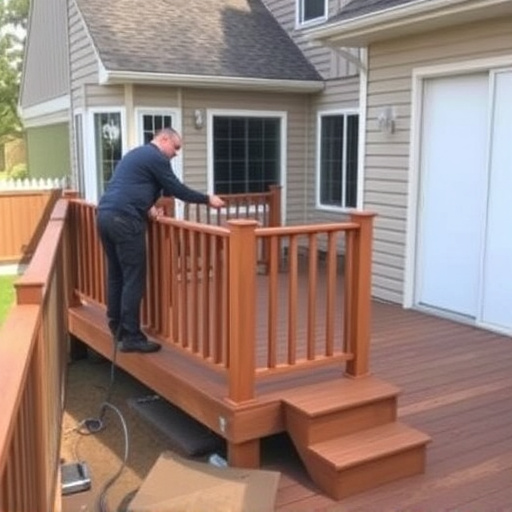
When scaling deck design for large outdoor spaces, understanding the physical dimensions is the first step. Measure the area thoroughly to determine the length and width, taking into account any unique features or obstacles like trees, awnings, or existing structures that could impact layout decisions. This measurement not only dictates the overall size of the deck but also guides choices on seating arrangements, circulation patterns, and even roofing solutions to ensure comfort and functionality in various weather conditions.
Professional siding can enhance the aesthetic appeal and structural integrity of the expanded deck, providing protection against storm damage repair needs that may arise with larger outdoor spaces. The dimensions will further influence the materials used—from joist spacing to decking boards—ensuring a durable and safe structure tailored to the specific size and environment of the outdoor space.
– Proportionally scaling deck design elements to the surrounding environment
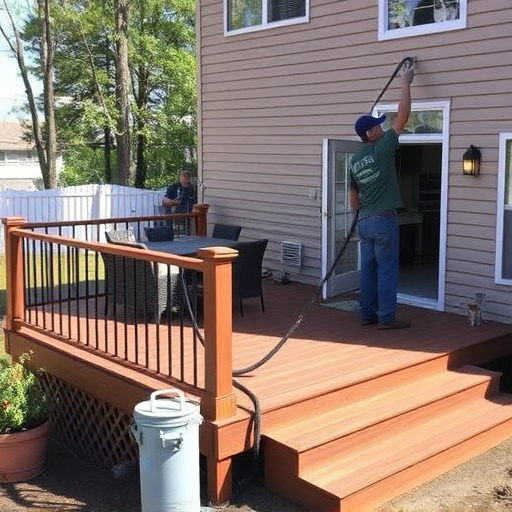
When scaling deck design for large outdoor spaces, it’s crucial to integrate seamlessly with the surrounding environment. This means proportionally adjusting each element—from railing heights to seating arrangements—to match the scale and style of your home and yard. For instance, a grand, multi-level deck should feature robust, architecturally-focused designs that complement the overall structure of the building, while a more intimate, single-story deck might opt for lighter, organic elements that blend with the natural landscape.
Consider the surrounding vegetation and architecture when making these decisions. Robust, solid railings might be suitable for areas with steep drops or active kids, whereas a delicate, cable railing could enhance a view without obstructing it. Incorporating local materials and color palettes also creates a harmonious look. For instance, using wood native to your region and complementary colors from the existing landscaping can make your deck design feel both welcoming and at-one-with-nature. Remember, the goal is to create a cohesive outdoor space that enhances your lifestyle without dominating the natural beauty of your property—a balance achievable through thoughtful proportional scaling. Think about engaging roofing services for protection and storm damage repair if necessary, as well as consulting with experts in deck design to ensure structural integrity and aesthetic appeal.
When scaling deck design for large outdoor spaces, a thoughtful balance between structure and environment is key. By carefully assessing the physical dimensions of the space and proportionally adjusting design elements, you can create a stunning and harmonious deck that seamlessly blends with its surroundings. Remember, successful deck design isn’t just about size; it’s about creating a proportionate oasis that enhances the beauty of your outdoor environment.





